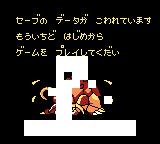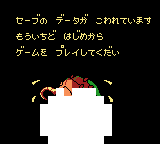Pokémon Diamond and Jade
- Pokémon Diamond redirects here. For the Pokémon game by Game Freak, see Pokémon Diamond and Pearl on Wikipedia.
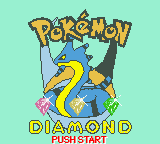
Pokémon Diamond and Jade are bootlegged versions of Keitai Denjuu Telefang 1. The Power Version was used to make Diamond, and the Speed Version became Jade. Along with a Chinese version, a partly-translated German and spanish one also exists. Pokemon Jade has also been used for the name for an edited version of a pirated game called Sonic Adventures 7.
Boxarts
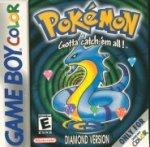
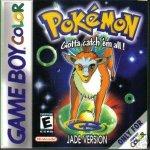
The monsters on the boxarts of both Pokémon Diamond and Jade depict a monster non-existent in the game, and seemed to be created entirely for the sake of a boxart. Pokémon Diamond features a blue snake creature with an unknown origin, while Jade has an altered version of the forest spirit Shishigami, from the film Princess Mononoke. The backs of most boxes are closely copied from the legitimate Pokémon Gold and Silver versions, with screenshots having been edited to include the fake mascot monsters, sometimes with monsters from other series such as Dragon Quest also included in the box design. There are many different variations of these boxes for different copies of the game, though this is typical of pirated games.[1]
Cartridges
For both Pokémon Diamond and Pokémon Jade, the cartridges are unlike legitimate Game Boy cartridges, and like the boxes, different variations of these cartridges exist.[1] [2] Most of the art on the cartridges are taken from the boxes of their respective games. Also, one type of Diamond cartridge has a nonstandard white casing, and Jade has a nonstandard green translucent casing. There are other Jade cartridges with black casings, just like other Game Boy Color games that are compatible with the original Game Boy. Also, like other bootleg cartridges, some of these cartridges say either "GAME" or "GAME COLOR" on the top instead of the usual "Nintendo GAME BOY" that is on authentic cartridges.
Sometimes, either Diamond or Jade is bundled with a pirated Pokémon Crystal, which, like Diamond and Jade, is unofficially and poorly translated from the Japanese version (most likely before Crystal was released outside of Japan), and has glitches not present in the original version. Also, some cartridges have both Diamond and Jade in one.
Translation
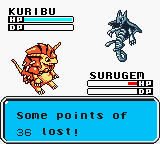
The translation has a reputation of being very poor. It is notorious for its Engrish with quotes such as "Some points of 4 lost!" Nearly all the characters' and Denjuu's names change in translation.
For example, Shigeki becomes Bek. Crypto becomes Kuribute. T-Fanger, a term for people who use Denjuu, becomes T-Mildew, Milde-T, and Mildew-T. Another notable characteristic of this translation is the abundant swearing.
Evidence suggests that the game was translated haphazardly from Japanese to Chinese first, then from Chinese to English, retaining various errors originating from the Chinese translation.[3]
Changes
Besides translating the game, a few other changes were made. The most notable was the removal of the ability to name the protagonist, as well as nicknaming any Denjuu that the player befriends. Instead, the player is always named "Bek", and any Denjuu found are automatically named based on their species name (and shortened to six characters like the Japanese version). This change was likely made because the name input was designed to work with Japanese kana, as opposed to the Latin alphabet, and the bootleggers apparently did not know how to edit the characters for the name input.
Another change was that the real-time clock was disabled, and instead replaced with a clock that only functions while the game is running. This is likely because including a real-time clock may have made the cart more expensive, or because real-time clocks rely on a battery to work properly.
Finally, the Smilesoft, Comic BomBom, and Natsume logos, as well as the opening credits, were removed, and the game jumps straight to the title screen instead. Similarly, the credits at the end of the game were removed, although the "THANK YOU FOR YOUR PLAYING!" text was kept, albeit modified slightly. In general, it is common for bootleg carts to remove credits.
Bugs and Glitches
- Main article: Glitches
The bootleg version contains numerous glitches, which is one reason why it is so notable.
- The game would not load a save on some carts. Depending on the emulator, selecting "Contin[ue]" when a saved game is present will either cause the game to freeze entirely (which means the player cannot do anything until the emulator is reset) or act as if there is no saved game. The problem is not the saved data; the saved data is actually present, but the bootleg cannot load it properly. If one saves on Diamond, then plays Power and imports the save (possible with VisualBoyAdvance or another emulator), it will load the save fine; however, the nicknames will be messed up.
- Dialing secret Denjuu causes the game to crash. This makes it impossible to obtain secret Denjuu without cheat codes. This glitch is caused by the hackers writing entirely new code to print text on the D-Shot screen, causing the game to go to the wrong ROM bank after the phone call is finished.
- Selecting "Prop" when no items are present causes the game to crash.
- In some cartridges, pressing A+B+Select+Start simultaneously causes the game to crash. On normal Game Boy games (not only Telefang), this makes the game produce a soft reset.
- In some cartridges, pressing Start after the Game Over screen causes the game to crash.
- Rapidly pressing B somewhere in the phone menu screen sometimes causes the game to crash. How this happens exactly is currently unknown.
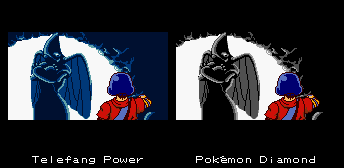
- The Lampgera obtained in the game is nicknamed "o" instead of "Noisy".
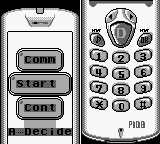
- The color palette is glitched in the introduction. This glitch is caused by the removal of the Smilesoft, Natsume, and Comic BomBom logos, since a flag that is necessary to color the screens is never set until entering the D-Shot screen. On carts that do not have the Game Over screen glitch, getting a Game Over and returning to the title screen will cause the intro to have correct color palettes.
- Custom tunes can not be created. When attempting to do so, screeching noises sound, making this feature unusable.
- There is a glitch in Ion Island where the door sometimes locks up after beating Gypsophi.
- On some carts, vases can not be picked up after the power is shut off. However, this glitch may never even be observed on carts that cannot load saved data.
- When playing in monochrome mode, the title screen is invisible until the Start button is pressed, at which point it darkens and becomes visible.
- When playing in monochrome mode, the background of the letters in the phone menu screen are darker than they should be.
- A second in the game passes after every 50 frames instead of 60, making the clock run 20% faster than normal[4]. This can be observed by looking at the clock on the bottom of the screen.
- If the saved data is corrupt, the error screen that appears has incorrect color palettes for each tile. This is because they are unchanged from the title screen (although the colors themselves change). Some of these palettes are completely white, causing Crypto to be covered in white squares. Where Crypto is visible, he often has incorrect color palettes in certain parts. Since the title screens are different between Diamond and Jade, the tiles on the error screen will have different colors between the two versions. This glitch, like the glitch that causes incorrect color palettes on the intro screen, is caused by the removal of the Smilesoft, Natsume, and Comic BomBom logos. Since the issue is palette related, the glitch doesn't occur on a monochrome Game Boy. The message (which is still visible in both versions) is also completely untranslated from Japanese.
-
Save corruption screen in Pokémon Diamond.
-
Save corruption screen in Pokémon Jade.
Banning
When Pokémon Diamond and Jade were first pirated, it was fairly common to find these games on auction sites such as eBay to trick people into thinking these games were "rare Pokémon games". Due to the fact that these games are fake and are illegal to sell, they were banned from being sold on eBay. As a result, they are much harder to find than they were before. Nevertheless, copies of these fakes can still be found from time to time.
References
- ↑ 1.0 1.1 RacieB's Telefang Fansite
- ↑ TRsRockin (mirror)
- ↑ T1 Chinese bootleg - Tulunk Village
- ↑ Verified with VisualBoyAdvance's Memory Viewer and Frame Advance features
